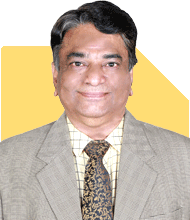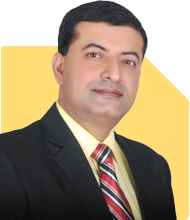Maxim Emmanuel |211 Answers |Ask -Follow
Soft Skills Trainer - Answered on Apr 30, 2024
An alumnus of the Xavier Institute of Management and Research, Mumbai, Maxim has over 30 years of experience in training young professionals and corporate organisations on how to improve soft skills and build interpersonal relationships through effective communication.
He also works with students and job aspirants offering career guidance, preparing them for job interviews and group discussions and teaching them how to make effective presentations.... more

my daughter is 14 and showing interest towards music (guitar) and how/ when/ where can she pursue music related courses? please guide.
At London School of Music, our structured and personalised lessons ensure that you're always playing at the right level for you. You'll be challenged, helping you to progress quicker than you ever could alone, but you'll also avoid frustration from the little things that can make you want to give up.
Study Guitar At Bimm — BIMM BA popular music performance degree with a specialty in guitar - Apply online today. Study a guitar performance degree at BIMM & kickstart your career in the music industry.
Wish her luck!
You may like to see similar questions and answers below
Mayank Kumar |189 Answers |Ask -Follow
Education Expert - Answered on May 25, 2023
Mayank Kumar |189 Answers |Ask -Follow
Education Expert - Answered on Jun 09, 2023
Mayank Chandel |498 Answers |Ask -Follow
IIT-JEE, NEET-UG, SAT, CLAT, CA, CS Exam Expert - Answered on May 05, 2024
Shekhar Kumar |136 Answers |Ask -Follow
Leadership, HR Expert - Answered on Apr 16, 2024
Ramalingam Kalirajan |2458 Answers |Ask -Follow
Mutual Funds, Financial Planning Expert - Answered on May 17, 2024
Ramalingam Kalirajan |2458 Answers |Ask -Follow
Mutual Funds, Financial Planning Expert - Answered on May 17, 2024
Ramalingam Kalirajan |2458 Answers |Ask -Follow
Mutual Funds, Financial Planning Expert - Answered on May 17, 2024
Ramalingam Kalirajan |2458 Answers |Ask -Follow
Mutual Funds, Financial Planning Expert - Answered on May 17, 2024
Ramalingam Kalirajan |2458 Answers |Ask -Follow
Mutual Funds, Financial Planning Expert - Answered on May 17, 2024
Ramalingam Kalirajan |2458 Answers |Ask -Follow
Mutual Funds, Financial Planning Expert - Answered on May 17, 2024
Shalini Singh |69 Answers |Ask -Follow
Dating Coach - Answered on May 17, 2024
Ramalingam Kalirajan |2458 Answers |Ask -Follow
Mutual Funds, Financial Planning Expert - Answered on May 17, 2024
Ramalingam Kalirajan |2458 Answers |Ask -Follow
Mutual Funds, Financial Planning Expert - Answered on May 17, 2024
Ramalingam Kalirajan |2458 Answers |Ask -Follow
Mutual Funds, Financial Planning Expert - Answered on May 17, 2024

























